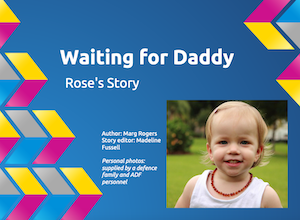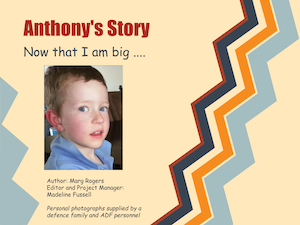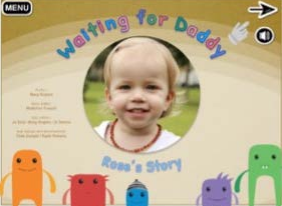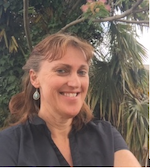COVID has caused commotion in the early childhood education and care sector since it arrived in 2020. It made educators more stressed and added burdens to those already overburdened.
The current level of chaos is unsustainable as shown in our research with Australian directors from long daycare centres, community preschools and family daycare services.
Six directors from rural and regional areas in NSW participated in the study. In their hour-long interview, the directors revealed stressors within the sector related to the pandemic in a number of areas. Here are the top five.
- Health regulations
As the COVID virus changes and governments try different methods to suppress the virus, early childhood directors and educators have tried to keep up with evolving regulations on a daily basis. To date, this has meant continually searching government websites to find the rules, watching media reports, reading government emails, attending webinars and reading text messages, adding to their daily workload and already onerous administrative requirements.
As the health crisis unfolded, text message updates from government departments regularly came through very late on a Friday afternoon and again on a Sunday afternoon. This meant directors had to spend chunks of time on their weekend trying to decipher the information and then act upon it, including sending on important updates and communications to staff and parents outside work hours.
Directors mentioned the added burden this required of having to constantly ensure lists of phone numbers were up to date so they could immediately contact staff, cleaners and parents if their centre was locked down. This led to a state of hypervigilance for some directors.
Additionally, one government department required educators to attend a webinar when most community service educators were on mandated leave. No compensation was offered to educators for these unpaid hours. Since educators are the 13th lowest paid workers in Australia, it is unreasonable to request they attend training sessions during their annual leave.
Educators said:
‘We were fine to wear masks in and out of the service – greeting parents. We were greeting parents at the gate, they were handing over their children’
‘It came in that you …had to wear a mask not outside, but inside when you were working with children, unless there was a child with a hearing challenge or there was a specific need for a child to see your face moving. I said to staff, actually, that’s all children all of the time.’
2. Staffing
Staffing has been much harder during the pandemic. Directors reported the numbers of children attending changed dramatically because of lockdowns, community outbreaks, families’changing needs and government rule changes. At one time, the government waived fees for everyone in childcare, so many families who didn’t normally access care enrolled, causing more changes in attendance and more administrative burden.
While the federal government’s JobKeeper scheme helpfully supported permanent staff, some casual educators did not receive the government payments. This meant that many casual staff left the sector. Directors reported that when asked to return, some of them didn’t want to lose the government payment which was far more generous than what they normally earned as an early childhood educator.
Staff rostering has also taken longer to organise during the various phases of the pandemic. Permanent staff have had to be given time to work with the children attending, time to work online with children, and then time to engage in professional development. Some services had to close because too many educators were considered close contacts of covid cases.
Additionally, time has had to be spent training educators on how to work with different technologies and with changing hygiene requirements. Staff have needed extra support with their own anxieties about catching the virus and working in a new way with masks with young children.
Educators commented:
‘We … stood down our casual staff, but… most of them could access the COVID payment … but it’s still difficult and we’ve actually spent this week changing staff round from room to room and putting the children together in one room’.
‘’The first week, we hardly had any children there. But by the second week, almost like 98 per cent.’
‘We had several vulnerable staff members had family members or themselves (with) autoimmune conditions that made them more vulnerable, ….. others had elderly parents in nursing homes’.
‘We’ve had different rosters for cleaning.
3. Informing and supporting families
Directors and educators have needed to be able to share the constantly changing and often confusing government regulations with parents, including which professions have been incorporated in the category of ‘essential workers’.
The guidelines have not been clear, leaving directors with difficult decision-making. Directors have reported spending time searching government websites trying to find clear definitions and rules to have evidence that their decisions were grounded on government guidelines. They have also needed to manage parents’ reactions to these decisions.
Educators said:
‘We’ve been trying to encourage families not to bring their children in …unless they’re an essential worker, which people have been really good about’.
‘If you’re a mum at home with five kids, you’re actually an essential worker as well’.
‘We shared resources that we were using with them (the children) and we even supplied families with some of those ideas around how to talk to their children. Parents (asked)… how do I explain this?’
4. Managing change and budgets
Some directors have faced challenging financial constraints and pressure from organisational managers. This included justifying the work and training their educators who were balancing that with the viability of the service.
Additional costs for hygiene and cleaning have had to be absorbed by services, whereas many education departments provided schools with extra cleaning staff to help them.
Educators explained:
‘COVID’s been a little bit different, because it’s been like a little bit like a stop-start routine’.
‘We wore the cost of that (reduction in attendance) for the first term. So, no families were asked to pay any fees. Then by second term, the State Government had stepped up and brought in the free preschool’.
‘We spoke to the department early this time and said, look, we’re getting a whole lot of different messages. What’s required? We’ve been proactive in getting in touch with the department…even they are juggling balls at the moment’.
‘Some staff members that wanted things cleaned twice a day’.
5. Status
On the positive side, educators revealed that families were more supportive and appreciative of educators during the pandemic. Despite this, educators were disappointed they were not recognised as essential workers in media coverage. This is even when they had continued working throughout the pandemic, staying open for children of essential workers. Being valued, respected and visible has been important to educators, as well as solidarity with other educators.
They explained:
‘I think it’s a good opportunity for the policymakers and the leaders to actually have a little bit of a voice for us as well and just show that we are out here. We’re visible. But everyone’s doing the best job they can, so my hat goes off to everyone wherever they are and to all my colleagues everywhere’.
‘We have to stand up and really shout out to the policymakers and the government that it’s fine to call on us, great, and we keep answering, but you’d better show us some respect’.
A need for change
Overall, directors talked about exhaustion of their staff and being unable to keep going with this level of work in an overloaded sector. Clearly, something needs to change.
Recently, NSW Premier, Dominic Perrottet, called for radical reform of childcare, which could affect other states. The Thrive by Five campaign is petitioning the government to prioritise significant reform. As this study has shown, it is not time to renovate the sector, we need a whole childcare rebuild.

Dr Marg Rogers is a Senior Lecturer in Early Childhood Education within the School of Education. Marg is the lead researcher for the funded Early Childhood Defence Program project (ECDP). This team, along with their Steering Committee of stakeholders has developed research-based, free, online resources for early childhood educators, parents and family/social workers to better support young children from Australian military families. She also leads an international team of researchers from Denmark, Canada and Georgia to investigate the impacts of regulated systems on about educators’ work. Twitter @MargRogers11

Associate Professor Wendy Boyd works as the Associate Dean in the Faculty of Education at Southern Cross University. Wendy is highly regarded in the early childhood field and researches in a number of areas, including educator professionalism. Wendy’s research focuses on provision of quality early childhood programs to support the optimal development of all children.

Professor Margaret Sims is a Professor in Early Childhood Education and Care and has worked in the areas of family support and disabilities for many years. She researches in the areas of professionalism in early childhood and higher education, families, disabilities, social justice and families from CaLD backgrounds. She is an Honorary Professor at Macquarie University.


















 Linda Newman (Dip. T (EC); B.Ed (EC); M.Ed (Hons); Ed.D.) has worked in the early childhood profession in various capacities for over 30 years. She is currently a Conjoint Associate Professor at The University of Newcastle and Early Childhood Inclusion Advisor at Northcott. Career highlights have included the development of among the first early childhood intervention services in NSW; co-authorship of The Ethical Response Cycle; membership of the Futuro Infantile Hoy (Children’s Futures Today) community capacity building team in poor communities in Chile; and collaborative leadership of Research Connections, an early childhood research network in Newcastle. Linda is co-author of Working with children and families: Professional, legal and ethical issues and Practitioner Research: International Issues and Perspectives. Research interests in recent years have included teacher professional learning, early childhood teacher workforce issues and early literacy.
Linda Newman (Dip. T (EC); B.Ed (EC); M.Ed (Hons); Ed.D.) has worked in the early childhood profession in various capacities for over 30 years. She is currently a Conjoint Associate Professor at The University of Newcastle and Early Childhood Inclusion Advisor at Northcott. Career highlights have included the development of among the first early childhood intervention services in NSW; co-authorship of The Ethical Response Cycle; membership of the Futuro Infantile Hoy (Children’s Futures Today) community capacity building team in poor communities in Chile; and collaborative leadership of Research Connections, an early childhood research network in Newcastle. Linda is co-author of Working with children and families: Professional, legal and ethical issues and Practitioner Research: International Issues and Perspectives. Research interests in recent years have included teacher professional learning, early childhood teacher workforce issues and early literacy.  Kate Higginbottom has been in the early childhood profession for over 12 years, the last 10 of which she has been a Centre Director, working across diverse long day care settings from private, to organisational and now the community based sector. She holds a Bachelor of Teaching (Early Childhood) from the University of New England and qualifications in training and assessment. Kate currently manages the operation Adamstown Community Early Learning and Preschool in collaboration with a voluntary management committee. She also supports other early education and care services as a consultant, with a particular forte in quality governance and leadership. Kate has worked in a number of advisory roles including on the Early Childhood and Primary External Advisory committee for University of Newcastle and the Queensland Workforce Council PSCQ for the Gold Coast.
Kate Higginbottom has been in the early childhood profession for over 12 years, the last 10 of which she has been a Centre Director, working across diverse long day care settings from private, to organisational and now the community based sector. She holds a Bachelor of Teaching (Early Childhood) from the University of New England and qualifications in training and assessment. Kate currently manages the operation Adamstown Community Early Learning and Preschool in collaboration with a voluntary management committee. She also supports other early education and care services as a consultant, with a particular forte in quality governance and leadership. Kate has worked in a number of advisory roles including on the Early Childhood and Primary External Advisory committee for University of Newcastle and the Queensland Workforce Council PSCQ for the Gold Coast.